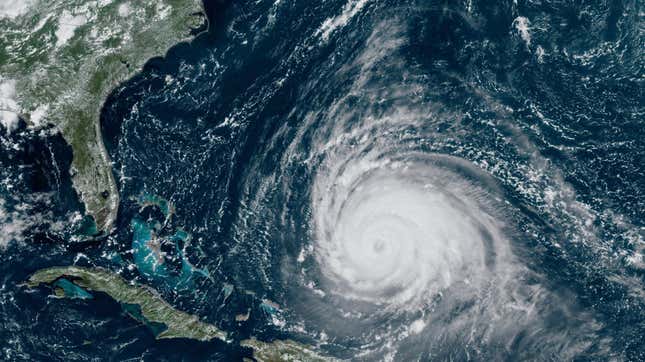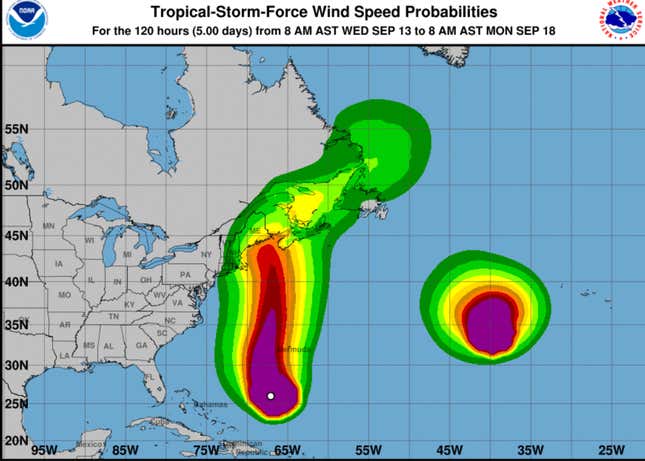
Hurricane Lee is still churning out in the Atlantic Ocean. Since the storm formed earlier this month, it has not made landfall over the contiguous U.S. But it has continued to move northward and is becoming a legitimate threat to the Northeast.
According to forecasts from the National Hurricane Center, the storm is expected to arrive over New England and Canada’s coast. Lee currently has maximum sustained winds of more than 110 miles per hour and could cause widespread damage across the Northeast if it comes close to land.
Advertisement
“There is an increasing risk of wind, coastal flooding, and rain impacts from Lee in portions of New England and Atlantic Canada beginning on Friday and continuing throughout the weekend,” the center tweeted today. “Watches [are] likely required for portions of these areas later today or tonight.” Because the storm is large, hazards will extend away from its center, so it won’t matter if the storm’s eye is directly above land.
Bermuda is expected to see tropical storm conditions like strong surf on the coast and heavy rainfall this week, and a Tropical Storm Warning is in effect for the island.
Advertisement
Advertisement

Late last week, the storm intensified to a category 5 hurricane with maximum sustained winds of more than 160 miles per hour. At the time, the hurricane’s path was uncertain and forecasters could not tell if it would make landfall over Floria or a Caribbean island. The storm has moved northward up the East Coast, leaving behind a path of dangerous conditions throughout the coast.
Want more climate and environment stories? Check out Earther’s guides to decarbonizing your home, divesting from fossil fuels, packing a disaster go bag, and overcoming climate dread. And don’t miss our coverage of the latest IPCC climate report, the future of carbon dioxide removal, and the invasive plants you should rip to shreds.
Services Marketplace – Listings, Bookings & Reviews